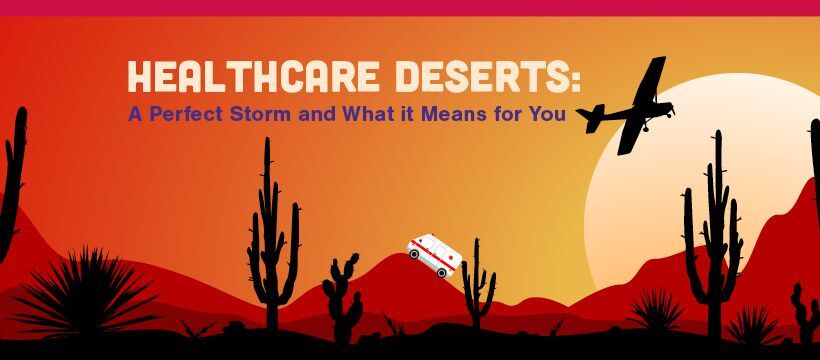Your organization may see an increase in patients traveling greater distances from home to reach your facility. And they may be farther along in their disease progression.
Why?
Because increasingly, rural healthcare facilities are struggling and closing, leaving large swaths of the U.S. population—more than 60 million people—without critical healthcare infrastructure. We call these rural areas healthcare desserts, and if you’ve been reading this newsletter this last year, you’ve met many families who are traveling far from home to receive medical treatment.
Thanks to healthcare leaders and practitioners like you, many families are finding Angel Flight East and the national network of organizations like ours. Because of your referrals, these patients—battling cancer and rare diseases—now receive free air transportation to get to treatment facilities. But millions more will need our assistance, and you can help.
WHAT'S GOING ON?
Mark Holmes, PhD, Director at The Cecil G. Sheps Center for Health Services; Research Director, North Carolina Rural Health Research Center; and Professor, Health Policy and Management, at Gillings School of Global Public Health, The University of North Carolina at Chapel Hill, shared testimony in May 2023 before the U.S. Senate Committee on Finance’s Subcommittee on Health Care.
A researcher for more than 25 years, Dr. Holmes noted that since 2005, nearly 200 rural communities have lost their hospitals. About half continue to provide some healthcare support to their communities, but others have been converted into condos and car washes—or have become abandoned buildings.
Hospitals that survive have cut services, such as maternity care and home health services. With these cuts also have come reductions to inpatient care and increasing costs. Then, the problem spirals. Rural hospitals are also facing an increasing shortage of healthcare staff and workers.
“Approximately 20 percent of Americans live more than 60 minutes from a medical oncologist1,” said Dr. Holmes, “and the financial burden of increased travel time reduces the use of life-saving treatments and, paradoxically, increases the cost of care; geographic barriers to care actually lead to higher costs in the long run.2 Rural residents who drive an hour a day – each way – for five weeks in a row to get their radiation treatment are facing fatigue of long car travel while fighting cancer.”
WHAT CAN YOU DO?
When you or someone on your clinical, social work, or in-take team notices a patient traveling from a great distance—greater than an hour or 100 miles—tell them about Angel Flight East. Our flights are always free, for as long as your patient needs support. They even benefit from getting to know their volunteer private pilot and having a compassionate, friendly face take them to and from their treatment.
1Levit LA, Byatt L, Lyss AP, Paskett ED, Levit K, Kirkwood K, Schenkel C, Schilsky RL. Closing the Rural Cancer Care Gap: Three Institutional Approaches. JCO Oncol Pract. 2020 Jul;16(7):422-430. doi: 10.1200/OP.20.00174. Epub 2020 Jun 23. PMID: 32574128.
2Rocque GB, Williams CP, Miller HD, Azuero A, Wheeler SB, Pisu M, Hull O, Rocconi RP, Kenzik KM. Impact of Travel Time on Health Care Costs and Resource Use by Phase of Care for Older Patients With Cancer. J Clin Oncol. 2019 Aug 1;37(22):1935- 1945. doi: 10.1200/JCO.19.00175. Epub 2019 Jun 11. PMID: 31184952; PMCID: PMC6804875.





